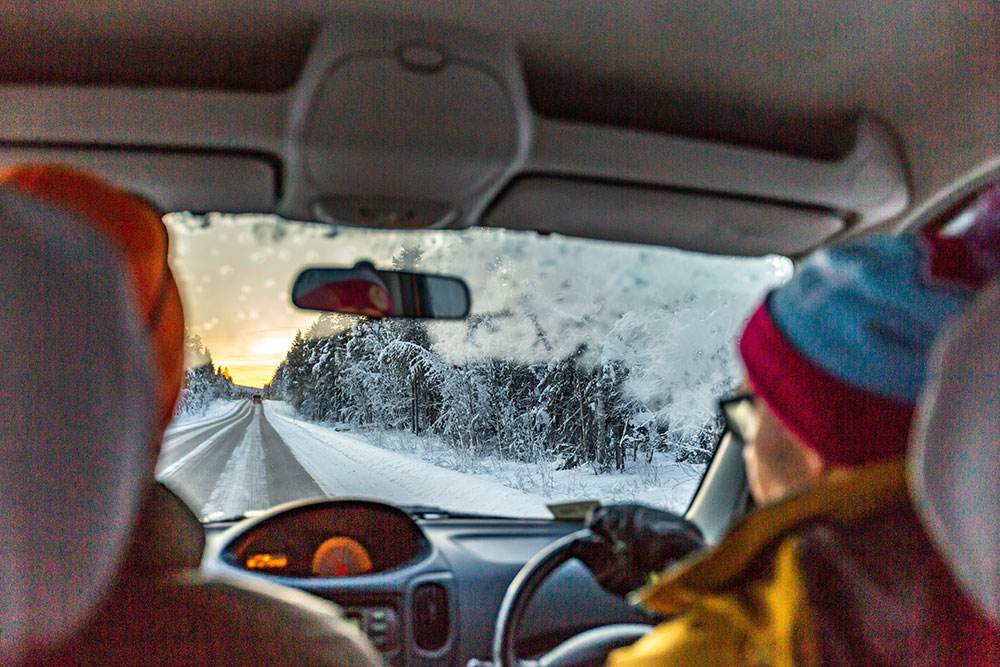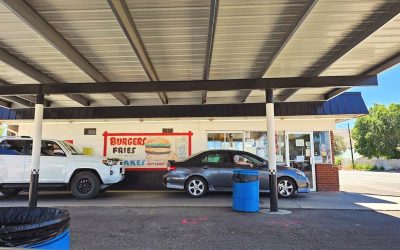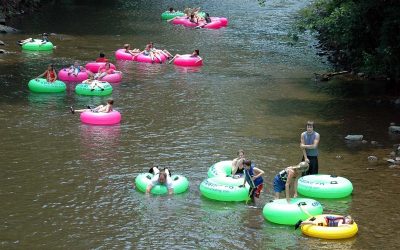With heavy snow right now in Oregon (at least heavy for us), I thought it would be a good time to offer some useful tips on how to drive in the snow. Driving in the snow can be challenging, even for many of us who have a lot of experience driving through the white stuff. If you live in an area where you are blessed with snow I'm sure you have seen your fair share of cocky drivers blow by you on a snowy road and wondered if you would find them in a ditch 20 minutes down the road. Hopefully this article can help you not be that person.
There is no way to sugar coat it, breaking down in the snow can lead to death. And being perpared while driving safely in the snow will hopefully prevent you from breaking down or getting stuck somewhere.
Dewitt Allan Finley, a travelling salesman, spent the last nine weeks of his life snowbound in his pickup truck in Oregon, drinking water from melted snow and sadly had no food to eat. Allan had disappeared on Nov. 14, 1995 during a sales trip in Oregon for a Kalispell camper company. His body was found on May 20 in the Coast Range of southwest Oregon.
Another story with a tragic ending in Oregon was the Kim family from San Francisco. The family disappeared Nov. 25, 2006, as they drove to Gold Beach from Merlin, just north of Grants Pass off Interstate 5. Kati Kim, 30, and her daughters were eventually found Dec. 4 with the car after being stuck in the snow for nine days with few supplies. The father of the family, James Kim had walked more than 16 miles in the cold and snow in a futile effort to was found dead two days later in a creek. The Oregonian covered the Kim family's tragic trip for months.
Of course, there is lesson to be learned from these stories. It is always good to be prepared before heading out and driving in the snow.
Useful Tips to Help You Drive in the Snow
Don't "Punch It" If You're In a Jam
It's quite common to get stuck or even stranded when travelling in deep snow. Getting stuck can go from bad to much worse, especially if you end up stranded with dropping temperatures. If you find yourself stuck in some really deep snow and your vehicle clearly is not going anywhere, it's time to let off the gas. I mean I get it, we have places to go! Naturally, I just want to "punch it" and get myself the hell out.
Keep in mind when attempting to floor it, you can easily lunge forward, or even lurch you to the left or right. The reality is, punching the gas is only going to dig you in deeper in the snow. This of course can make a bad situation much worse as you are endangering anyone outside of the car, as well as risking damaging your vehicle. Not to mention, revving your engine too much can be really bad on your vehicle. Case and point, the flaming car incident that occurred in Raleigh, North Carolina a few years ago. The driver of the car revved the engine too hard, as they attempted to drive up an icy snow-covered hill, which resulted in the car literally catching fire.
Leave Your Lights On If You're Using Your Wipers
No matter what the time of the day, snow and mist make it by far more difficult to see and leaving your lights on will make you more visible to all other drivers.
Take It Slow
Drive slow, you have less traction. It's not a race, even if other drivers around you seem to be driving at unsafe speeds. And if you are driving a large SUV or 4-wheel drive, that doesn't make you God on the road. Larger vehicles and those equipped with traction-control systems absolutely give you some benefits in the snow, but that does not mean you won't end up in a ditch if aren't still careful. Imagine you have a a cup of scalding coffee in your lap and drive to avoid spilling it.
Watch For Power Outages
It's very typical for storms knock out electric service, which of course render traffic signals useless. When coming to a spot where traffic signals are out, your best best is to treat the area like a four-way stop.
Prepare Ahead Before You Drive in Snow
GPS Can Be Wrong
Navigation systems and similar smartphone GPS apps are great tools, but you may need to verify the identified detour route to make sure it's appropriate given current conditions and the vehicle you are driving.
Most navigation and GPS tools or apps don't take current road or weather conditions into consideration. They may lead you onto remote roads that are neither maintained or passible in all weather conditions, and this can end very badly. There was a very sad incident in 2021 where a woman from Oregon was found dead, after she and her daughter were stranded in a forest when driving to Utah. According to the story, their navigation system got them lost in a northern Idaho forest. It may be a good idea to have a paper map on hand as well, covering wherever you may be traveling.
If you are not familiar with an area and current road conditions, don't venture off state roads or attempt detours onto unfamiliar. Use some common sense here, during the winter season many roads can be unpassable.
Kitty Litter May Save The Day
Sand or gravel would be ideal too if you can find it, to get unstuck, but here's one you might have not thought about. You may consider carrying a bag of kitty litter, as you can lay it down behind your wheels and rock your vehicle out of its rut. A long strip of cardboard may do the trick too, to gain enough traction under your tires if they get stuck. Once you're actually in motion, do your best to keep your momentum to avoid being stuck again. Having a shovel in your vehicle would be handy too.
Have The Right Tires For Driving In Snow
If you live somewhere where storms can bring a foot or two of snow at once, you should definitely be running snow tires, not all-season tires. Before the snow starts coming down, make sure your tires air pressure is good and you have plenty of tread. Over inflating will reduce your tire's contact with the result, which will result in less traction. As a last resort, you can take a little air out of your tires - just enough so they are visibly lower. Keep in mind to only do this if you have a way to quickly have them refilled by someone close by. This can damage your tires if you drive too far without filling them again. When driving on underinflated tires, this puts more rubber in contact with the ground and will give you better traction for a short distance.
Have Chains or Traction Tires
Having chains or some good quality traction tires are also important. Usually one or the other is required in higher elevation or mountainous areas. Whenever you are faced with snow or ice, they are absolutely a good thing to have.
Winter storms are affecting parts of the west coast this week. If your area is affected, be careful while driving:
🚗 Clear your vehicle of ice or snow before the trip.
🚗 Have an emergency car kit.
🚗 Slow down and leave more room between cars.More: https://t.co/Huk3zeppXj pic.twitter.com/6MSVd2c29N
— Readygov (@Readygov) December 27, 2021
Check Your Vehicle's Battery, Lights, and Fluids
Having functioning lights is especially important so other drivers on the road in hazardous conditions can see you clearly.
Keep Your Gas Tank Full
Top it off and be prepared for a long trip. And fill up every chance you get! With potential wrecks, slipper ice and poor visibility, a trip that would normally take you one hour could easily turn into 4 hours. Having plenty of fuel is essential for long trips, and you never know when a gas station may not even be open.
Keep Your Windows Clean
If your windows are nice and clean, they will be less likely to frost over on cold mornings. It goes without saying an ice scraper in your car is good to have also.
Carry an Emergency Kit
You just really never know if you will end up being stuck for a prolonged period of time when driving in snow. Having a well put together emergency kit all year long that includes plenty of food, drinking water, warm blankets and any essential medical supplies you may need. Think long term and worst case scenario, you're going to need all of these things if you get stuck in a blizzard.
Travel Way Earlier, Or Later To Avoid a Storm
If you have no choice but to travel in the snow for whatever reason, remember that clear roads early in the day could turn snowy by the time you’re ready to leave. Allow plenty of time to get to your destination before bad weather hits. You may want to consider staying overnight to where you are heading. If you can avoid road driving in the snow altogether, it is always best to stay put if you feel its even slightly dangerous to travel.
Never Underestimate a Light Snow
While a foot of snow is naturally more worrisome, it is not always necessarily a case of more being more dangerous. A dusting, or light snow can be more dangerous than a thick blanket of it. The reason is a thin layer of snow on roads melts easily under the heat from heavy traffic, and in subfreezing temperatures this can refreeze the snowmelt which turns into a sheet of dangerous ice. This can result in horrific traffic disasters, like the one in Washington D.C. in 2016. Another more recent horrific example was when freezing rain caused around 133 cars to pileup in Texas, resulting in at least 6 deaths.
In what can be a very scary situation, hitting ice on the road, the worst thing you can do is panic and slam on the breaks. When hitting the breaks on ice, you can easily lose control and fly all over the place with no way of steering in the right direction.
The reality is you don't have much control of your vehicle when sliding on ice, and there's not much you can do to try and come to a stop. The best thing to do is attempt to keep your vehicle going as straight as possible by turning your wheel into the spin. Staying straight will lower the chances you will regain traction when your sideways, which could result in rolling your vehicle. Sometimes, and while it may seem counterintuitive the best thing to do is to release both the gas and brake pedals completely if you have lost complete control. Ideally, this will either unlock the wheels or reduce wheelspin, and improve your ability to steer.
Here's a tip from from Car & Driver that's worth mentioning. Per their article:
Always look where you want to go—not where the car is heading at that precise moment. Let your peripheral vision take care of whatever you're trying to avoid. Racing drivers know that you almost always end up where you are looking; that's one of the reasons they're so good at recovering from skids.
Car & Driver has some more tips we may have not covered, including how to best operate Anti-Lock-Breaks.
Clear Your Car of Ice or Snow
Too many people ignore this one. There is nothing more aggrivating than someone flying down the road with snow caked on their roof, locked and loaded like an ice gun ready to fire at any point and hitting your vehicle. Not only can it hit a vehicle behind you, it could slide forward when you hit the breaks and completely obscure all visibility. Get a snow brush, put in the extra time to clear your vehicle of ice and snow before travelling.
Look Ahead and Focus
Breaking early and slowing down gradually until you feel the car's inertia dissipate, to avoid sliding into an intersection or spin during a turn is important while driving in the snow. Slow way down for turns. The slipperier it gets, the farther down the road you should look—and think. Anticipate what your next move will be. Allow at least double the stopping distance when the road is wet, triple on snow, and even more on ice.
When Driving in Snow in Oregon
Passing a Snowplow is Illegal in Oregon
According to Oregon.Gov, it's illegal to pass a snowplow on the right on state highways. On most Oregon highways, snowplows have “wing” plows that stick out more than eight feet from the right front edge of the truck. The snow being plowed or blown off the road can contain rocks and other debris that can damage vehicles.
Drivers who try to pass on the right when a snowplow is in operation run the risk of damaging their vehicles, hitting the snowplow or running off the road and into a snow bank or guardrail.
Check Route Before You Travel
Tripcheck.com is one of our favorite tools before heading out no matter what the weather. This website is a great resource for Oregon offering condition reports on highways, mountain passes, and essentially all major roads in Oregon. You can view live cameras as well beforehand to see how your route is looking and consider a different route if needed. If you're not in Oregon, you may want to check for your state what they have to offer for something similar to Tripcheck. Travelers in Oregon can also dial 511 to access the same immediate road and weather information available on TripCheck.
Ready for a winter adventure in Oregon? Hit the link here.













